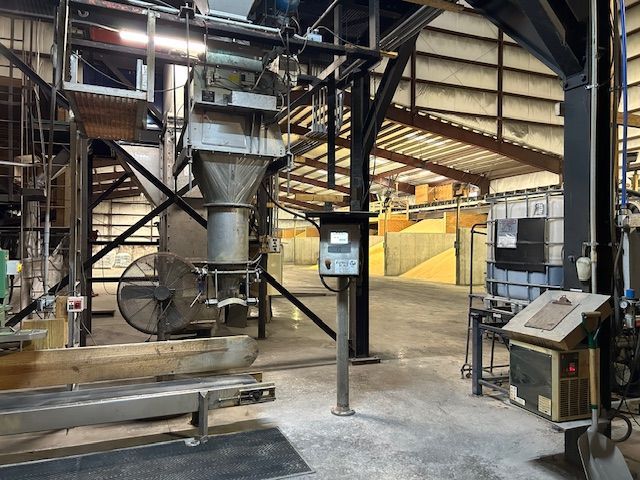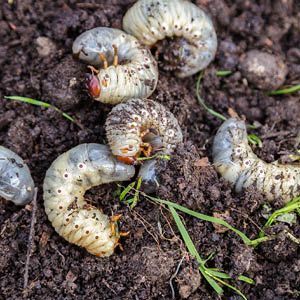HOW BOTH MUST WORK IN HARMONY TO ENSURE A BEAUTIFUL LAWN
It’s no secret that irrigation and fertilization need to be paired together in order to maintain a healthy, beautiful lawn. It’s important to understand that these two programs need to work in harmony in order to optimize plant nutrient uptake and help sustain a healthy environment. So before you just go off and water a lawn this season, review these 7 steps to ensure you’re irrigating your turf grass to the fullest:
1. PH TEST SOIL AND WATER!
Soil testing
the pH of your lawn is key to understanding the proper amount and type of fertilizer, control product or soil amendment you will need to manage a lush, healthy turf but it’s also crucial to pH test the water you’re applying to turf grass as well. If a lawn is experiencing consistent pH imbalances, even after applications of soil amendments, the pH of the water source being dispersed can be the culprit to the consistent imbalance in soil. If irrigation is too acidic or basic, it will affect the pH balance of the soil so be sure both soil and water pH are aligned.
2. LEARN THE SOIL TYPE OF THE AREA
Knowing whether turf grass soil in an area is clay, sand or silt will not only better your understanding of the amount of fertilizer, control product or
soil amendment
needed but it will also help you define the soil’s water holding capacity. For example, sandy soil can hold no more than 0.75 inches of water per foot of soil depth; if irrigation is exceeded in a sandy soil then nutrients mobile in the soil like nitrate-nitrogen can leach below the root system.
3. IRRIGATE TO THE SPECIFIC TURF GRASS OF THE AREA
Each species of turf grass has a different root zone (the volume of soil inhabited by the plant’s root system-EDIS, University of Florida IFAS Extension) and varies in water needs. Knowing the depth of the root zone will determine the maximum amount of water that can be applied when irrigating. Learn whether a lawn has cool- or warm-season turf grass to help establish the proper amount of water a plant needs as well as species root zone depth characteristics (the root zone will enlarge as turf grows). Contact your local extension office for help determining grass species.
4. UNDERSTAND YOUR IRRIGATION SYSTEM WATER APPLICATION RATES
Calibrating an irrigation system like a sprinkler, hose, or in-ground system is essential to correctly applying the proper amount of water a lawn needs. To measure the water applied over a set period of time, use uniform catch-cans like coffee or tuna cans, and spread them around the water zone of a lawn, scattering at random within the area (all catch cans need to be the same, if you’re using tuna cans, then all must be tuna cans). Turn on water for 15 minutes. After this time, turn off water, take a ruler and measure water in each catch-can. The more uniform the water, the better water application rate is present. Repeat for each different zone. For more information, check out University of Florida IRAS Extension’s article on How to Calibrate your Sprinkler System by L.E. Trenholm’s, J. Bryan Unruh’s and J.L. Cisar’s.
5. WATER WISELY!
Turf grass irrigation needs to change as seasons change. Summer stress will bring plants to reduced growth; fall and spring will bring heavier growth while winter brings turf dormancy. Just like you adjust a lawn care program around the change of seasons, it’s important to adjust the frequency of irrigation as well. Modifying irrigation will help encourage a deeper and stronger root system, utilize the fertilizer you apply more efficiently and help manage drought-stressed turf.
Try allowing your turf to tell you when it needs water by watching for these signs:
- Folding of leaf blades: This is a natural response to a stressed plant from water loss. Watch for the turf leaf blades to begin curling lengthwise.
- Mower Tire Tracks & Footprints Remaining Visible: When a lawn is drought-stressed, mowing tire tracks and footprints will remain visible long after they are made.
- Blue-Gray color: This coloration is an indication of stressed lawn in need of water.
- Plant Wilting: This can be seen in lawns under stress from drought.
6. LIGHTLY WATER FERTILIZER AFTER APPLICATION
The last thing you want is to lose all the hard work and money you put into treating your lawn. The best way to prevent unsightly burning of grass leaves or being washed away from a heavy rain is to lightly water immediately after an application in order to initiate absorption into the soil. Water wisely! This does not mean drenching; water until the fertilizer and soil become moist, roughly ¼ inch of water or 15 minutes.
7. DO NOT OVER WATER!
Over watering can lead to runoff of fertilizer, control products or soil amendments into ground water resources. Established lawns need roughly an inch of water per week throughout the growing season. One inch is equivalent to roughly an hour of watering from a sprinkler. Depending on your region, humidity may affect water supplementation. Southeast and northern regions, frequent to rain, may need less water while southwest regions may require an additional inch of water per week. If rain is forecasted within a 24-hour period, refrain from watering with an irrigation system or sprinkler.
- Note: Irrigation systems must be correctly calibrated in order to adhere to the rough guideline of 1 hour = 1 inch. An irrigation system that is not calibrated may be over watering or under watering turf.
For professional fertilizers, humic and AMP-XC™ enriched products available, please visit TurfCare’s online Product Catalog.
For green industry professionals or others interested in ordering Turfcare products, please contact our Customer Service
to find a distributor near you.
References:
http://www.consumerreports.org/cro/2013/07/essential-lawn-care-tips/index.htm
https://www.hunker.com/12507312/how-often-should-grass-be-watered-after-it-is-fertilized
http://edis.ifas.ufl.edu/ss586
http://ufdc.ufl.edu/IR00003389/00001
Turf Care Supply - TurfReport Blog

Turf Care Supply, LLC, a portfolio company of Platte River Equity, has officially acquired Beaty Fertilizer, the industry respected Tennessee-based manufacturer and blender of custom granular and liquid fertilizers, as well as combination products. This strategic move expands Turf Care’s manufacturing footprint, adds new product capabilities, and enhances overall production capacity. “The partnership with Beaty Fertilizer marks a major milestone in our journey and an important step forward in our mission to grow, innovate and lead in our industry,” said Mark Mangan, President of Turf Care. “This acquisition is more than just expansion; it’s a powerful opportunity to strengthen our product offerings, broaden our market reach and provide greater value to our customers. By welcoming Beaty into the Turf Care family, we are reinforcing our commitment to excellence and positioning ourselves for an even brighter future.” “We are excited about this next step in the Beaty Fertilizer story. For almost 50 years, our family and our employees have worked hard to serve customers and communities with pride and heart,” said John Beaty, President of Beaty. “Now, we are embracing an opportunity for growth with Turf Care. With our combined know-how and resources, we’ll keep building on what we’ve worked so hard to create and bring even more value to our customers, employees and partners. We truly believe this partnership will keep the Beaty legacy going strong while opening up new doors for growth and innovation.” Tarun Kanthety, Vice President at Platte River, added, “We believe the acquisition of Beaty Fertilizer represents a strategic step in expanding Turf Care’s footprint and product breadth... as it scales and enhances its value proposition to customers.”

Root out Grubs, Before they Attack Yours! White grubs, the immature stage of several scarab beetles—including Japanese beetles, masked chafers, May and June beetles, and green June beetles—are a major threat to turfgrass across the Southeast. These beetles follow a complete metamorphosis (egg, grub, pupa, adult), with most species completing their cycle in one year. Eggs are laid in early summer, grubs hatch within two weeks, and begin feeding on turfgrass roots through the late summer and fall. May and June beetles differ slightly, with a two- to three-year life cycle and prolonged feeding as third-instar grubs. Grubs damage turf by severing roots, causing grass to yellow, wilt, or lift easily from the soil. Feeding is typically concentrated in patches and worsens during hot, dry weather. Wildlife digging for grubs can create further turf destruction. Healthy turf may tolerate 5–10 grubs per square foot, but damage becomes evident as populations rise or turf is under stress. Early detection and timing are essential. Scouting begins in late June, shortly after adult beetle activity peaks. Monitoring plants favored by beetles can signal egg-laying is underway. Treatment is most effective when small grubs are active—typically from mid-July through early August. For professional turfgrass managers, insecticides containing imidacloprid (Merit®), chlorantraniliprole (Acelepryn®), or trichlorfon (Dylox®) are the most effective tools. The primary months of preventative application of Acelepryn® is from April to end of May and Merit® from April into July - targeting grubs before they hatch. Curative treatments with Dylox® or similar products are applied July through the fall, when young grubs are feeding and most vulnerable. Always follow label directions for optimal application and safety. Timing may vary slightly by regional seasonal needs. Turf Care Supply has a variety of professional TCS Growstar insecticide fertilizers available to protect your turf and prevent grub damage, before it starts. Click on the button below to view products, contact your sales rep for addition TC Growstar products available.

Platte River Equity Portfolio Company Turf Care Supply, LLC Acquires Agri-Nutrients, Inc. Brunswick, OH , October 9, 2024 – Platte River Equity (“Platte River”) portfolio company Turf Care Supply, LLC (“Turf Care”) is pleased to announce its acquisition of Agri-Nutrients, Inc. (“Agri-Nutrients”), a manufacturer and blender of custom granular fertilizers for the turf & ornamental (“T&O”) industry. This strategic acquisition provides Turf Care with an established presence in the south-central United States, an enhanced product portfolio and additional manufacturing capacity. “This acquisition represents much more than a business transaction; it is a strategic step forward in expanding our reach and enhancing our customers’ growth. By bringing Agri-Nutrients into the Turf Care family, we are broadening our product portfolio, expanding our market presence and further positioning ourselves as a leader in providing innovative solutions for our customers,” said Mark Mangan, President of Turf Care. “We are excited about joining the Turf Care team,” said Jim Montgomery, President of Agri-Nutrients. “At Agri-Nutrients, our core values center around customer service and product innovation, and we are confident that this combination will allow us to better serve the needs of our customers.” “Platte River welcomes the Agri-Nutrients team to Turf Care. This transaction underscores our long-term commitment to fostering growth through both organic and inorganic initiatives across the Turf Care platform,” said Tarun Kanthety, Vice President of Platte River. “The partnership with Agri-Nutrients strengthens Turf Care’s value-added offering, creating additional growth opportunities across the combined customer base.” B&A Corporate Advisors served as the exclusive financial advisor to Agri-Nutrients. About Agri-Nutrients Founded in 1992 and based in Catoosa, OK, Agri-Nutrients is a manufacturer and blender of custom granular fertilizers for the T&O industry, predominantly selling into the lawn care, sports turf and golf course end markets. About Turf Care Supply Established in 1974, Turf Care Supply is one of the largest formulators and blenders of urea products to the T&O market. Turf Care has a comprehensive product portfolio of fertilizers, combination products (herbicide/insecticide), soil amendments and enhanced efficiency fertilizer ingredients. Turf Care's products are sold to distributors and blenders serving the commercial, residential and golf end markets. Turf Care operates four manufacturing facilities strategically located throughout the eastern U.S. About Platte River Equity Founded in 2006 and based in Denver, CO, Platte River Equity is a private equity firm focused on investments in established lower middle market operating companies within targeted industrial sectors where it has substantial operating and investing experience. Platte River utilizes prudent capital structures in order to invest in future growth opportunities and withstand changing economic environments. The firm also provides significant ongoing support to its portfolio companies through dedicated resources across functional areas. The firm has raised funds with committed capital in excess of $1.6 billion and is currently investing out of its fifth fund. The Platte River team is the largest collective investor across its funds, deeply aligning the firm with its investors and portfolio company management teams.

